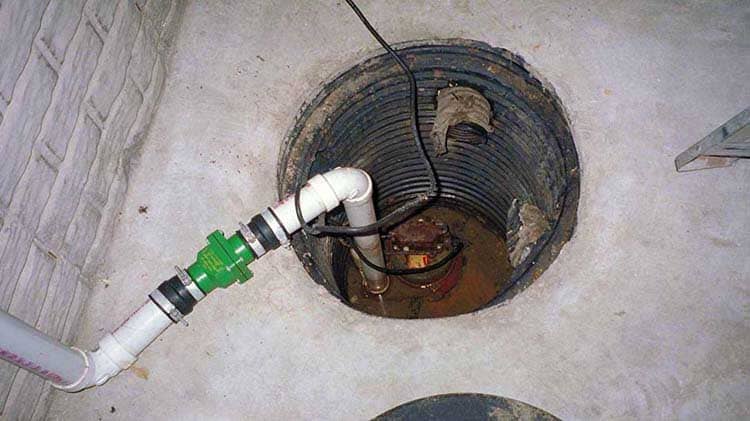
Are you worried about how to solve the problem of water dampness in your locality, especially during the rainy season? Trust me; Sump Pump is your true friend.
From keeping your home safe to helping you to remove excess water without much effort, the sump pump will help you. But what should be the perfect Sump Pump sizing? And how do I know which is the best outdoor sump pump? If the perfect size isn’t picked up, it can damage more than reasonable.
Hence, it is highly crucial to choose an appropriate sump pump design by doing proper pump size calculation, as the need and size vary according to the area and size.
Finding the right sump pump size requires you to look into the various mathematical calculations considering other factors like pump capacity and sump pit.
Since every home, every locality is different; a single thumb rule cannot be generalized. Hence, in short. The answer is complicated.
So let’s dive into the process of finding your perfect size for a sump pump.
How Big of a Sump Pump Do I Need?
Before finding the right size of the sump pump, you need to have the following considerations into your mind:
Estimate Your Capacity Needs
Before deciding what size sump pump I need, think about the pump capacity. The pump size calculation is a binding estimate describing the speed of water to be moved in an hour.
A smaller capacity means more time will be consumed, and slower will be the process. In simpler terms, lower capacity means The pump will not pump the required amount of water.
Then how to size a sump pump? To get the right size, we need a sump pump size calculator. For that, gather a tape measurer and calculator, and the formula is pretty simple:
Note: Choose a wet or rainy day, and follow these simple steps to get an accurate measurement.
- Let the sump pump run till the float switch turns off. And unplug the pump for a few minutes.
- Once the water is accumulated in the sump pit while unplugging, measure it well using a tape measure. One inch is equivalent to about one gallon of water.
- Now, to get an estimated water volume in an hour, calculate and multiply the inches of water accumulation by 60.
- To avoid extra hassle on rainy days, multiply it by 1.5. The resulting number is how many gallons per hour you need.
Formula for an 18-inch diameter sump pit:
1 x Water Accumulation x 60 x 1.5 = Estimated GPH
Of or 24-inch diameter sump it, if pit gathers more than 30 gallons of water and uses the following formula.
Formula for a 24-inch diameter sump pit:
2 x Water Accumulation x 60 x 1.5 = Estimated GPH
Example
To make things quick to understand, Let’s assume that an 18-inch diameter sump pit gathers around 20 inches of water if turned off. Then, 20*60= 1,200.
And to avoid the worst scenarios. 1,200*1.5= 1,800
Hence, the household needs an 1800 GPM sump.
Choose the Appropriate Horsepower
Determining how powerful the sump pump motor will function, motor power is an equally important factor for consideration.
Usually, a regular household needs a pump with ½ horsepower or by ¾ horsepower motor. But 1/3 vs. 1/2 hp sump pump, which one is more effective?
If you live in a flood-prone area, choose a 1/2hp pump as it is safer to choose a motor that overpumps than under pumps. And for others, 1/3hp will work great.
Look at the Vertical Lift
The vertical lift or static head measures the height of water traveling through the discharge pipe.
Prefer measuring the home’s vertical distance from the point where the water enters into the pump till the pipe changes its shape to horizontal.
Examine the Friction Head
Water traveling through the discharge pipe creates friction. If the friction isn’t overcome, pump failure is the possible outcome.
The narrow pipes, additional pipe fittings create more friction. To avoid the situation, estimate the friction head.
Formula:
Friction Head + Static Head = Total Dynamic Head
How To Maintain A Sump Pump
Maintaining a sump pump could be a tedious task but will be better than spending bucks and buck on it repeatedly. Not only will it improve the longevity of the product, but it will also help you do the task in a few minutes.
Because the dewatering pump is exposed to large amounts of water, it requires more maintenance than other home parts.
Follow some tips and tricks to keep it safe and secure.
- Always keep ensuring that the power cord is plugged in.
- Also, keep a check that the float switch is working correctly.
- We recommend removing the drain pump and thoroughly inspecting it once a year. This will help you find any broken parts or parts.
- Rinse all parts as needed as debris may have accumulated over a year. Consider adding a topper to the pit. This will prevent debris, children, or pets from sliding into holes in the ground.
Conclusion:
The right pump size depends entirely on your basement and house. You’ll need to estimate power requirements, capacity requirements, look at vertical lift, and consider head friction.
Of these four notes, the determination of power and capacity is the most important. You won’t need to look at vertical lifts or friction heads for a full-sized home.
Also, consider the maintenance of your sump pump. After a bit of use, you can see it loosen up. This is because the sump pump needs a bit of maintenance.